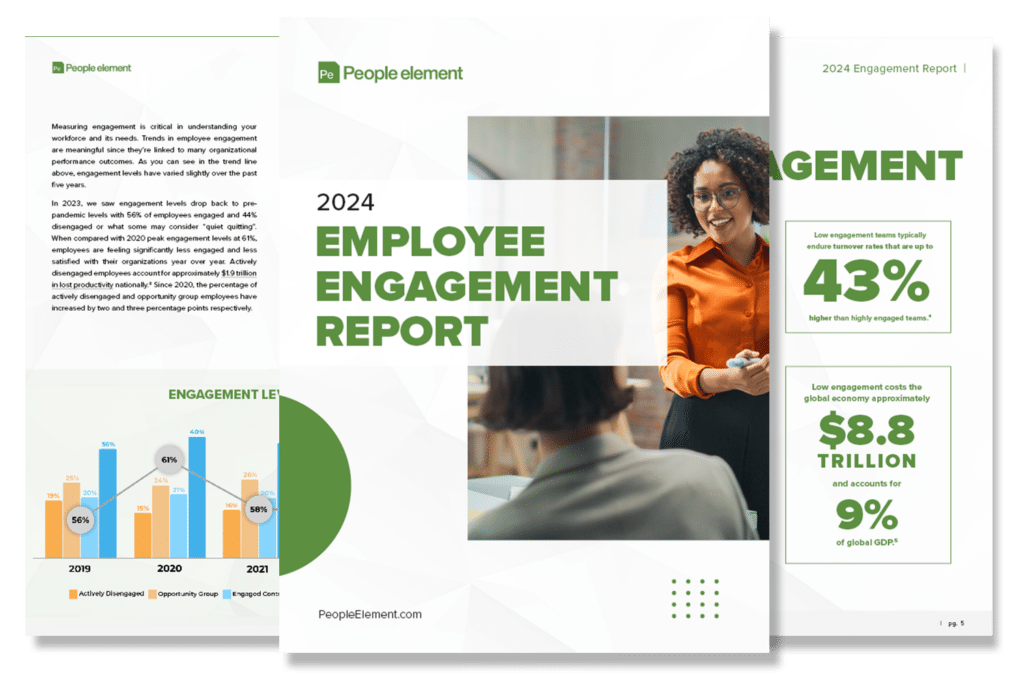Gathering continuous feedback from employees is an essential aspect of employee engagement and organizational development. It allows you to positively impact the entire employee experience, capturing valuable data and opportunities for improvement every step of their employment. One of the biggest challenges and opportunities that HR departments have is in enabling employees to provide continuous feedback.
Why is Providing Continuous Feedback Important?
In order to positively impact the entire employee experience, organizations must do more than use just one fixed set of questions pushed to all employees on a regular schedule. The best results come from gathering feedback across the entire employee lifecycle, from pre-hire to exit, and more importantly, asking the right questions of the right population at the right times.
Because employees’ feelings and perspectives naturally vary across departments, locations and time, leveraging feedback from the entire employee lifecycle can provide a more complete image of employee engagement and effectiveness to guide effective and impactful decisions.
For an effective continuous listening strategy that avoids survey fatigue, organizations must cover these three things in the following order: Ask, Listen, and Act. Embarking on the journey with the necessary bandwidth and the leadership buy-in is crucial for success, but it doesn’t need to be difficult. In fact, executing a strong continuous listening strategy should feel like a two-way conversation with your people: you ask and they tell, you listen and act, they respond.
How to Make Continuous Listening Easy
In HR, continuous listening is a modern approach to employee surveying that uses regular, ongoing feedback surveys to track live employee sentiment rather than waiting for annual performance reviews or when an employee is exiting.
These continuous listening surveys can be employee-to-HR or employee-to-employee feedback, such as with manager 360 surveys, and this steady stream of feedback helps both sides to discern what is working, what isn’t and to identify opportunities for improvement.
Schedule regular meetings with your employees to discuss their concerns, goals, and feedback. This could be in the form of one-on-one meetings or team meetings. Then, create multiple channels for your employees to share their feedback and ensure everyone has a chance to be heard. Both Stay interviews and Employee Engagement Surveys are an excellent way to regularly check in with employees to learn what motivates them. Questions can be catered to identify skill gaps as well as opportunities for learning and growth. This ultimately helps an organization align employee development plans with its short- and long-term strategic goals.
By encouraging ongoing communication between managers and employees, continuous listening helps ensure that goals and plans remain relevant and achievable. By adopting this strategy and a continuous listening platform, organizations can create a more collaborative and transparent approach to managing employee performance that improves engagement, productivity, and employee satisfaction.
Creating a Feedback Culture
To create a workplace culture that prioritizes open communication and feedback, utilize a variety of channels, which allows individuals to choose the avenue that best suits their communication style and level of comfort. This may include online surveys, suggestion boxes, one-on-one meetings with managers, focus groups, and employee forums.
Encourage employees to share their thoughts and ideas without fear of retaliation. Make it clear that their feedback is valued and will be used to improve the organization. When employees share their feedback, actively listen to their comments and ask follow-up questions to gain a deeper understanding of their concerns. Avoid interrupting or dismissing any feedback and schedule follow-ups when necessary to discuss their comments and address any ongoing concerns. This helps to build trust while illustrating that the organization is committed to ongoing improvement.
Don’t forget to give your managers the tools they need to effectively manage a feedback culture! Unfortunately, more than 40% of managers haven’t been provided with sufficient tools and training to be successful. Utilizing manager 360 surveys can drive post-feedback development and skill-building, provide ongoing coaching and resources, and ultimately set your managers up for success.
Then, use the feedback received across departments, locations and time to make positive changes in the workplace. Yes, it requires some heavy lifting, but the number one limiting factor to a successful continuous listening strategy is action! While there isn’t one action that fits all, the best actions are the ones that you believe are achievable and will work for your organization. Then, be sure to tell staff that you are acting on their feedback. Employees are more likely to continue providing feedback if they see that their input is taken seriously and leads to tangible improvements.
Empower Your Managers to Succeed
By implementing a strategy for continuous employee feedback, organizations can create a feedback-rich culture that supports ongoing employee engagement, development and improvement. A manager feedback survey like Manager 360 is an effective, all-encompassing approach to supporting the continuous feedback cycle at any organization. This online platform with automated templates and reports empowers managers with the right tools to grow, engage and lead in a culture of continuous feedback. In addition to building and improving the overall manager-employee relationship, it supports professional development while simplifying the entire feedback process.
You can request a demo with one of our Employee Listening experts at People Element to learn how 360-degree feedback from employees can support CPM and your culture of continuous feedback.





